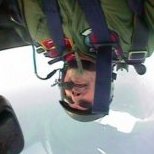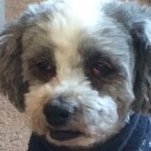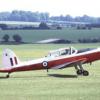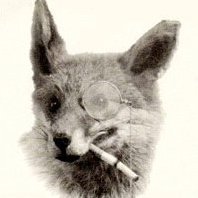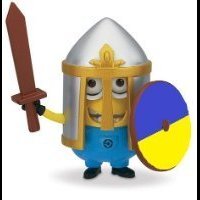Leaderboard
Popular Content
Showing content with the highest reputation on 10/10/19 in all areas
-
Afternoon folk's,built for the year I was born GB as the lightning entered squadron service in 1960.I've always loved the Lightning but not silver finishes so this late scheme really appealed as I built the F6 in the Sharkmouth GB,thanks for looking in.30 points
-
Latest build. 1/72 Revell kit. Bit of a challenge. Mark DSCN3508 (2) by mwsfly9, on Flickr DSCN3507 (2) by mwsfly9, on Flickr DSCN3510 (2) by mwsfly9, on Flickr DSCN3512 (2) by mwsfly9, on Flickr DSCN3513 (2) by mwsfly9, on Flickr DSCN3515 (2) by mwsfly9, on Flickr DSCN3516 (2) by mwsfly9, on Flickr DSCN3518 (2) by mwsfly9, on Flickr DSCN3519 (3) by mwsfly9, on Flickr DSCN3521 (2) by mwsfly9, on Flickr DSCN3522 (2) by mwsfly9, on Flickr DSCN3523 (2) by mwsfly9, on Flickr DSCN3524 (2) by mwsfly9, on Flickr DSCN3525 (2) by mwsfly9, on Flickr DSCN3526 (2) by mwsfly9, on Flickr DSCN3527 (2) by mwsfly9, on Flickr23 points
-
Evening folk's,the dust is sitting thick on the shelves but with the change in the weather it's time to close the loft window for the winter and have a dusting session,all bar one of these Spitfires posts are long gone in the PB debacle so here's the 1/48 collection post dusting.All airfix other than Special Hobby's Seafire.Thanks for taking the time to look.23 points
-
Hello everyone, My another recent build from Eduard, MIG15 Czechoslovakian Air Force. I have used Airbrush IWATA Neo TRN1, AMMO-MIG metal acrylic paints, ALCLAD Aqua gloss varnish, Vallejo sating varnish, Abteilung Oil paints and pigments. Hope you like it. Ales21 points
-
Hi there. This is my 20th model I have completed since the beginning of this year, after I restarted this hobby after putting it on hold all those years ago. And I've had a blast ever since. I've been building mostly cold war jets in 1/72 scale. So about the model: Model: Eduard MiG-21MF (Royal Class Combo, No. R0017) Scale: 1/72 Paints: Vallejo Model & Air Aftermarket: None (kit was supplied with resin & etch parts) Weathering: Vallejo Weathering Effects, Flory Models Wash Decals: Techmod TM72070 Eduard kit is simply but brilliant. Not a bad word I can say about it. Word of caution of the photography - I'm trying to get better photos but I'm not quite there yet. Especially the colours are bit off but anyway, I hope you can see enough. Comments & constructive criticism is welcomed.19 points
-
The evolution of US Navy aircraft camouflage paints circa World War Two. There is a great deal of misinformation or over-simplification to the point of being simply incorrect floating around the internet, in magazines and occasionally in books. As late as 1940 the US Navy were still flying aircraft around in the high-visibility schemes of silver with Orange-Yellow upper surfaces of the wings and ID markings such as flashes, coloured tails, fuselage bands and coloured engine cowlings in Lemon Yellow, Willow Green, True Blue, Black or Insignia Red. Merging in to 1941, these schemes were being replaced in favour of an overall Light Gray scheme. The first camouflage schemes applied was in use by late 1941 prior to the USA entering the war. This is often referred to as the "2 tone" scheme and consisted of Blue-Gray over Light Gray using shades from existing camouflage paint specs. This is the camouflage which prevailed through 1942; the Battle of Coral Sea, the Battle of Midway, Guadalcanal etc and featured widely on Douglas TBD-1 Devastators, SBD-2 and -3 Dauntless, Grumman F4F-3 and -4 Wildcats and Vought SBU-1 Vindicators etc. The very first Grumman F6Fs and TBFs were also delivered in this scheme. In the Atlantic theatre, a different scheme was used which comprised a mostly Insignia White scheme with Dark Ghost Gray upper surfaces. By 1943, the US Navy were trying to standardise on paints with the US Army Air Force using the Army Navy Aeronautical (ANA) paints. In the Pacific theatre, the "Tricolor" scheme was introduced which is a misnomer - it had 4 distinct colours in it! The application directions were a little different for larger or smaller aircraft, which in practical terms means something like a TBF / TBM Avenger and larger for larger aircraft and fighters and scout floatplanes for smaller aircraft. Larger aircraft were to use all 4 colours which were ANA601 Insignia White for the undersides, ANA608 Intermediate Blue for the vertical surfaces e.g. fin and rudder, ANA606 Semi-Gloss Sea Blue for the upper surfaces of the wings and ANA607 Non-Specular Sea Blue for the upper surfaces of the fuselage and leading edges of the wings and tail. For smaller aircraft, it was acceptable to graduate the dark upper surface colour(s) into the undersurface white, although plenty photographic evidence exists to show that use of Intermediate Blue on fighters was commonplace. By 1944, a desire to simplify production of aircraft was coupled with the acknowledgement that ANA607 in particular was not a particularly robust paint which chipped fairly easily and faded rapidly. Both ANA606 and ANA607 would be replaced by a new paint, ANA623 Glossy Sea Blue, and the applied camouflage scheme for new aircraft was simplified to an overall ANA623 Glossy Sea Blue scheme. A suggestion from Grumman was made to dispense with ANA605 Insignia Blue for the national insignias on such painted aircraft to save time, owing to the similarity of the blues, which was a practise introduced possibly some time before it was formally accepted. This scheme was hereafter applied to all aircraft delivered under Lend-Lease to the United Kingdom's Fleet Air Arm (e.g. Hellcat II, Corsair IV etc) also. In 1947, ANA623 Glossy Sea Blue was revised in colour, but retained its name unchanged. This would be the version of Glossy Sea Blue applied to the first generation US Navy jets which would see action over Korea such the Grumman F9F Panther and McDonnell F2H Banshee etc. It is this version of ANA623 which was incorporated into Federal Standard 595A in 1956 as FS15042. It is important to understand that ANA606 was a different colour to ANA607 which was different again to ANA623; many mistakenly believe that they are simply a satin and matt finish of the same colour. This in part is due to the well-meant yet ultimately misleading and unhelpful habit of trying to use the modern American Federal Standard 595 collection to describe WW2 era paints, and in this case often people quote FS15042 for ANA623, FS25042 for ANA606 and FS35042 for ANA607 which are, unfortunately, just gloss, satin and matt versions of the same colour. Herein lies the problem with using FS595 for a reference - it contains circa 650 chips but many of those are duplicates in different finishes. Objectively, FS595 is a very limited colour palette and the limitations become apparent when the same FS595 reference is given to describe three different colours.13 points
-
#23/2019 The sexy beast from the east is done. Hobby Boss kit built oob, only some stencils came from Hi-Decal because the kit decals aren´t the best. Camo painted with AK Real Color Air Supperiority Blue for the lighter blue. For the darker blue my dad mixed Tamiya XF-18 Medium Blue with XF-23 Light Blue and XF-2 White in approx. 4:1:1. The grey was done with Tamiya XF-19 Sky Grey. Exhaust area painted with Gunze H63 Mettalic Blue Green, H76 Burnt Iron and Tamiya X-13 Metallic Blue. Build thread here https://www.britmodeller.com/forums/index.php?/topic/235057810-guardian-of-the-east148-sukhoi-su-27-flanker-b-russian-airforce/ DSC_0001 by grimreaper110, auf Flickr DSC_0002 by grimreaper110, auf Flickr DSC_0003 by grimreaper110, auf Flickr DSC_0004 by grimreaper110, auf Flickr DSC_0005 by grimreaper110, auf Flickr DSC_0006 by grimreaper110, auf Flickr DSC_0007 by grimreaper110, auf Flickr DSC_0008 by grimreaper110, auf Flickr DSC_0009 by grimreaper110, auf Flickr DSC_0010 by grimreaper110, auf Flickr DSC_0011 by grimreaper110, auf Flickr DSC_0012 by grimreaper110, auf Flickr DSC_0013 by grimreaper110, auf Flickr DSC_0014 by grimreaper110, auf Flickr DSC_0015 by grimreaper110, auf Flickr DSC_0016 by grimreaper110, auf Flickr DSC_0017 by grimreaper110, auf Flickr DSC_0018 by grimreaper110, auf Flickr DSC_0019 by grimreaper110, auf Flickr DSC_0020 by grimreaper110, auf Flickr DSC_0021 by grimreaper110, auf Flickr DSC_0022 by grimreaper110, auf Flickr DSC_0023 by grimreaper110, auf Flickr DSC_0024 by grimreaper110, auf Flickr DSC_0025 by grimreaper110, auf Flickr13 points
-
Hi all This is my latest production and last of the backlog for RFI. Back in 1983 I had a flight in a DC3 at an airshow at Dyce, Aberdeen. The aircraft was G-AMPO of Air Atlantique in their, then new, Green Stripe livery. I loved the look of this livery and the memory of the flight has lasted. When I returned to modelling I was browsing through BM and found an example of G-AMHJ in the Air Atlantique blue stripe livery, That set me looking for a set of the green stripe decals by 26decals. I then looked for a suitable kit of the DC3, winning an old ESCI kit on eBay for a very good price. Nice to see that the image on the box was the aircraft I intended to build, albeit in an older scheme, and with a previous owner. The build was fairly straightforward with good fit of the kit. I did some alterations to make the kit as close to the plane I flew in as possible. I cut and glazed some extra cabin windows and scratched some extra seats in the cabin so that it was the 32 seater I was in. In hindsight that seemed a waste of time because you can't see in the cabin. The 26Decals were excellent and easy to work with although there were a coupled of errors; the emergency exit marks for the cabin roof say 'EXIT HERE IN EMERGENCY' when it should be 'CUT HERE IN EMERGENCY'. I have left these as they were. The other issue with the decals was the plane has three emergency exits through windows but there is only 2 on the decals sheet. I resolved this by painting a red square onto the decal film, seems to work ok. While the plane I flew in was basically out of the paint-shop I have chosen to present my interpretation as G-AMPO appeared in 1985, looking quite grubby and bearing recently added Air Luton titles. My presentation is just before the new titles were added. On to the pictures. Thanks for looking. Graeme13 points
-
Here is my Harrier T.52 ZA250/G-VTOL, Paris Airshow 1979, built from the Sword kit with a Master pitot, painted with Hataka and Lifecolour acrylics and finished with decals from Vingtor set 72-118 Harrier Test and Demonstration Aircraft #3. The kit was a bit of a challenge, the fit of some parts was poor, particularly the intake trunking and front cockpit instrument shroud. There were gaps that needed shims and steps, especially behind the cockpit. The front instrument shroud provided by sword is way too big and I ended up replacing it with a part fashioned from a cut down drop tank half. I opened up the auxiliary intake doors, in future I would recommend replacing these parts with Freightdog resin ones. The Vingtor decals are nice and thin and generally went on well, conforming over curves and bumps, although delicate. I had some small of the smaller stencils break up, possibly as I had the water too warm. Frustratingly, one of the fuselage roundels was misprinted without the white segment, and I managed to pull of part of the serial when handling and needed to touch up by hand. Anyway, here it is, a bit rough in places but good enough for my cabinet: Thanks for looking. AW11 points
-
Morning all, I'm going to call it a day with this one. A fun build of a sincere and well meant kit! Definitely recommended for all aficionados of early Soviet bombers, assuming Tamiya isn't about to tool an SB. The kit has lovely detail, but slightly iffy fit in parts, particularly the transparencies, which aren't the most transparent either. But it seems to be an accurate rendition of Russia's Blenheim, right down to the incredibly spindly landing gear (I wondered if the real ones wobbled when you sneezed on them..?) I also had good fun on the weathering, acting on the assumption the VVS didn't regularly clean their bombers. Here is my finished model: ...and thanks to all who followed on my first rather sporadic WiP: Now to clean up the bench and on to the next adventure in styrene! All best Harry10 points
-
I don't post all that frequently here, but I've had a pretty good year and a bit as far as modelling goes, so I thought I'd post up some photos of my recent builds... In chronological order, starting from last September - Hasegawa 1/48 Hurricane Mk IID (I'm aware the tail wheel is the wrong way round, it won't actually fit the correct way round, Hasegawa's error in making that part, although I suppose I could have cut it and sanded it and forced it to fit correctly). Xtrakit 1/72 DH Vampire Italeri 1/72 F-117 Nighthawk (unfortunately the kit decals for the underside cracked on me during the build) Revell 1/72 Tornado GR1 (I had a problem with the decals, they're by Printscale, and were very thin, the "Mig Eater" decal rolled up irreparably, hence why it's missing) Revell 1/72 Mig-21 Airfix 1/72 C-47 (my D-Day commemoration build) Airfix 1/72 A-4 Skyhawk (unfortunately the canopy fogged on me, Mk.82 Snakeyes are from Hasegawa)10 points
-
Finally got around to doing some pics of one of my restorations to old kit builds. This one is the Aurora 1/72nd kit of a PA-28 Cherokee re G-BBID that I flew in on My 4th 1994 from Shoreham Airport. last known to be registered as N519MC My reworked model has decals made for me and based on the only photo I could find of it in the markings it wore at the time of my flight. I do have another one built in BA flying club colours.10 points
-
Rocking on with this... As I’ve discussed, this experiment with alclad involved starting with a very shiny and reflective surface and winding it back with weathering... I’d done a fair bit of post shading already, which added lots of variation in the finish but didn’t really knock back the levels of sheen... so it was time to bring out the big weathering guns - let’s start with an oil sludge wash... This is a mix of black and white oil paint - to make up a dark grey - thinned with enamel thinners - I covered the entire upper half - let it dry and wiped it of with a dry paper towel. The same process was done underneath... So that did a good job of filling in the panel lines and did tone back the shiny finish - probably not as much as I wanted so went at it again... This time I mixed up a dirtier darker colour and did more of panel line wash - highlighting the lines and rivets more... That was an improvement so I left it there... was this enough to bring the finish down to something close to high speed silver...? No. Not even close. It’s still far too shiny and looks much closer to nmf than hss - but what the hey - it was a fun experiment and I learned abit more about using and weathering with these paints. Next up - undercarriage went on... With the wheels in place I reached a moment of truth - time to see if my efforts weighing down the nose would come to fruition... after a little drying time, I popped her on her legs... Nooooooooooooooooo!!!!!!! God damn everything to hell. Looking at the placement of the rear wheels, they’re actually placed more forward of the wheel wells which is why my earlier testing didn’t give me the same result. After a lot of language not suitable to publish in a family friendly publication such as this, I wondered how far I was off the mark. I grabbed a spare bit lead weight left over from the build and blue tacked it to the nose. It was enough to tip the balance. so small - small enough to fit into the front wheel well perhaps... Like so... and like mick jagger used to say: paint it black... Gave it another test.. Get in there ya good thing! With that we’re just about there. A few more bits to stick on and some touch ups and we’ll be home. Here she is now: These were taken under normal light conditions so not too shiny - it does light up as soon as you shine anything on it. But overall I’m pretty happy with how it turned out - it was a fun build and I learned a few new tricks. As always thanks for following along - and for the suggestions and supportive comments. They’re always appreciated 😎. I’ll have this up on RFI pretty soon... Cheers John10 points
-
Hey all, this is my older model, built probably in June or so. Eduard FW 190 in 1 48 scale Any feedback welcome! Happy building!9 points
-
A very enjoyable build only made tricky by me making a bit of a mistake under the front panels. This lead in turn to some difficulty in fitting them.9 points
-
Here is the last of my builds, the Gloster Meteor F Mk IV. Not the prettiest of planes, it was developed from the wartime Meteor F Mk III which was itself an improved version of the Meteor F Mk I, the RAF's first operational jet fighter. The Mk I was powered by a production version of the Power Jets/Whittle engine and was slower than many contemporary piston engined fighters, so after a short run was replaced by the Mk III with more powerful engines. Even then the Meteor was barely faster than the Tempest and Spitfire XIV, However jet engine development gathered pace rapidly and the post war Mk IV was nearly 100 mph faster. Unfortunately this over-stressed the already suspect wing, so after a few had been produced the wing was clipped to relieve the stress. The Frog kit was an easy enough build and the only modification I made was to graft on more accurate engine intakes from an Xtrakit ex MPM Meteor F8 kit, replace the pitot tube, and add a whip aerial. For those of you who have been following my various builds, as suggested in one of my notorious rants I have photographed the Meteor on top of my ruddy garden wall that was built concurrent with this GB and became a topic of such interest that it also ended up in the gallery, together with my "Hairy Hooligans". Still waiting for some dry weather to paint it! I would like to thank the organisers of this build for their hard work and support, together with all who have participated, either building kits or by making informative and encouraging comments. This is my first GB and it has been an interesting and amusing experience. See you around, or as we say in Yorkhire - "Ah'll sithee". Pete9 points
-
We can only hope that they find some sort of contentment there Thanks Dennis, yes, you are right and it is doubly fatal to try to unscrew the lid of the superglue bottle lid with the same hand that is holding the part in the tweezers while the other hand holds the superglue bottle. I have learned this the hard way, as no doubt you have too, and I even felt a twinge of fear as I started doing it, but brushed it aside. So it could be argued that I haven't actually learned it at all Turnabout is fair play Bruce, if I see one of the Z-M Mustang IIIs at Telford within my price range it is on borrowed time This arrived in the post, the only bit of aftermarket that I intend using: These harness sets by Radu Brinzan in Eire and HGW in Czechia can be fiddly to put together but the worst thing about them is once you have successfully used them once you really won't want to go back to etched metal harness. The kit provides optional seat parts with moulded-on harness and they are nicely done too, and yet here we are. At this point I want to point out that I don't deserve this kit, and if it should turn out well it will be down to good design and no fault of mine. The next step should have been for me to fit the exhaust outlets; instead... well I'll go through it in order. I painted the 'collar' of the backplate and the cowling-gill actuators silver: .... and test-fitted it. The test-fit was so good that I immediately glued it in place: ... and fitted the carburettor intake: ... and the intake grille: This last picture was taken about the same time that I thought "Oh, I didn't fit the exhausts" I can confirm, fortunately, that the kit is forgiving enough for you to do this afterwards, albeit less easily than it would have been were it done in the intended sequence: So I got away with it, but to be honest if this is the level of competence that I am bringing to the process it does not bode terribly well, I am the one bringing a stick of celery to a knife fight and I need to pay a bit more attention or I will have no-one to blame but myself if it goes pear-shaped. Some of the deviations from the instructions have been logical, to get a bunch of parts painted up at once and reduce airbrush cleaning for example, but that one was pure innattention. Anyway, hopefully I have done my worst now and will be better behaved in future The next step, and the last parts of the main engine section, is to fit the cowling-gills and the mounting cradle... after that we go onto the next section which is the engine firewall, fuel and oil tanks and cockpit area... Cheers, Stew9 points
-
It’s nice to see a model that hasn’t been pre-shaded, post-shaded, panel line washed and weathered to within an inch of its life; it looks like it’s fresh from the paint shop, or the crew chief has found a band of “willing volunteers” to keep it nicely bulled up just in case a very senior officer comes along for a snap inspection. I have one of these to build which I intend to do as one of the few operated by RAF Transport Command around the end of World War II; did you encounter any significant problems with construction? I know that there are some errors in the instructions, and that the instructions don’t explain which bits are relevant to which version. I’m not sure whether to do as you have with everything buttoned up and, presumably, the main cabin interior omitted, or to open the doors and have to squeeze in a shed load of ballast in the front baggage hold.9 points
-
Be gentle with me. First model built in over 20 years. Baby footsteps up to the stirrups at the momentn let alone getting back in the saddle. Look forward to your input. Colours not perfect. Be it in reality or through the camera lens.8 points
-
Hi This is the third of my backlog of models for RFI. I needed something 'easy' after building the Revell Inc MIG-21 so opted for a Hurricane IIC from Academy. This is my first Academy kit and I found it an enjoyable build. I built this straight OOB, only correcting the serial number. The decal for the 3 Squadron RAF example is shown as ZB464, but should be Z3464. I am a long way from mastering weathering so this Hurricane looks as if it has been in hard battle for some time and not been subject to any cleaning. Thanks for looking. Graeme8 points
-
Having not built anything for over a year i decided to raid the stash for something vaguely quick and easy! This is the 1:72 Hasegawa Sepecat Jaguar, and as i have 5 RAF ones i decided to do this one finished as A130/11-YK of the French Air Force, circa 1991, in faded/dirty Gulf War/desert sand scheme. The BL755s will be replaced when something more suitable turns up Hasegawa 1.72 Jaguar A A130 by Jonathan Francis, on Flickr Hasegawa 1.72 Jaguar A A130-3 by Jonathan Francis, on Flickr Hasegawa 1.72 Jaguar A A130-7 by Jonathan Francis, on Flickr Hasegawa 1.72 Jaguar A A130-8 by Jonathan Francis, on Flickr Hasegawa 1.72 Jaguar A A130-4 by Jonathan Francis, on Flickr Thanks for looking Jon8 points
-
Bandai's 1/72 Incom Corporation T-65 X-wing space superiority fighter (1977): Cheers W-D8 points
-
This is my latest build: a Tamiya's 1/48th scale F-14D Tomcat. It's a great kit, with superb fit and smart assembly, i had lot of fun building it! Kit built OOB, with some details from Eduard PE and KA Models exhaust nozzels. Painted with Gunze's Acryl Paint (h-307, H-308, H-337). So, let's start the photogalley: Ciao Ale7 points
-
.... Airfix 1/72nd Dakota and all decals fro generic sets in my decal bank. A bit belated but here it is... Representing an RCAF Dakota of 437 Squadron formed for the mass drop over Holland.7 points
-
Why do I have a sleazy newspaper knocking on the door . . . . . . . . I apologise o Alien one . This is how my eyes were feeling after a session at the bench Aye aye Sir! How's the diet working?? 😉 I called them much worse than that. Oh I see what you mean, thanks 🙂 I'm just a novice. Get a load of these Now where did I put my knitting needles? More than welcome, were all here to help each other Thanks for the support guys Kev7 points
-
Thanks Martin, good luck with yours! A brief update: Have chopped up the second vacuformed canopy, and have done a little better. In the next photo the rear or turtle-deck part is just setting there, and it fits well enough. The letters "G" show where each side have to be glued, the top rear part left unglued. This is because the part marked "XXXX" will have to be removed for the rear canopy support for the opened position, after first dipping the whole shebang into Future or whatever: Above right, the rear section has been glued into place with CA using the smallest size Glue Looper, which worked very well; a tiny dot at a time, right where it needed to go! The arrow above right point to a small plastic shim to fill a gap. Just barely seen in both photos (arrow in left picture, above) shons where I scored the panel lines gently a few times with a new #11 blade, as this part will have to be removed later on. Next, the canopy to fuselage join area all around has been given a coat of Mr Surfacer 500 to fill any small gaps. I really hate gaps at the canopy and jets, and try really hard to remove them: Above right -- the clear panels have been temporarily masked with pieces of Tamiya Tape, just to protect the glassy areas from sanding scratches. 400 grit wet or dry is used wet to smooth the Mr Surfacer 500, after which more filler will be added, if necessary. Just so happens that the sanding seems to be okay after one pass, so then I traced the score lines a few more times with the #11 blade, and separated the piece of the rear canopy at the top (arrow): That's all for now, see you all later... Ed7 points
-
Hi folks! I finally managed to paint the Elan13 figures to complement the wonderfull WNW Sopwith Camel. The WIP: It is OOB, except for the seat belt. Rigging was done with EZ Line and Prym knitting elastic. The grass mat is from Polak models. Here it is in all its glory: Cheers, Markus6 points
-
Another of my very old builds. ESCI 1/72nd kit Modeldecal decals and a memory of 1977 Greenham Common.6 points
-
Not often I post in this forum, but I picked up this kit on a commission build at the weekend and am enjoying it more than I expected. Currently I have most of the superstructure assembled and primed, all the remaining parts have been primed on the sprues. Got the light grey on the hull and now waiting for the Hull Red to dry. Started on my favourite part first (the aircraft) and got that finished today. A nice (and very diminutive) Merlin: More to come next week. Kev6 points
-
The first time that I saw photos of the Shackleton MR3 s was when I was at Primary School in the late 1960s. These were in aviation and RAF magazines that my father would bring home from the NCO's mess at RAF Bawdsey where my dad served. It was here that I also started building FROG models which I bought from the village Post Office, and I noticed that the Shackleton was illustrated on the side of the kit boxes as one of those made by FROG. The village Post Office did not sell the big kits, so it was during a shopping trip to Woodbridge that I first saw a FROG Shackleton on sale in a toy and model shop on the High Street. I so wanted one but for some reason it would be a few years before I did get one. The fabulous and exciting box front of the FROG Shackleton as I remember it. The Air-Sea Rescue title on the box always seemed a bit out of context considering what it has just done to that submarine. I suppose they would have needed rescueing after. My father took me to the air show and open day at USAF Bentwaters in 1970 and during the display it was announced that a Shackleton was on its way. I was so excited to see a Shackleton for real. Unfortunately it did one fly by at quite a height and that was it, the only time that I would ever see a Mark 3 flying. And this is the actual photo that my dad took. And here is a magazine I have kept from October 1970 still with the coffee stains from the Mess at RAF Bawdsey with a Mark 3 in beautiful colour on the front cover. Christmas 1973 and I asked my dad if I could have a FROG Shackleton. They were getting hard to find by then but he found me one with in a squashed box and a few broken parts inside. But I was so excited, at last I had one. And here I am on Christmas Day with my FROG Shackleton. I built it pretty quickly and not very well unfortunately. I left the wings and tailplanes unglued so they just slotted on and came off for storage. The rear of the box showing the typical FROG full colour painting guide for the two versions. A number of years later I decided to pull the fuselage apart, scratchbuild an interior and rebuild and repaint it. Here we have a drawing I made of the interior of my Shackleton before I closed it up. A photo taken sometime in the early 1990s. It depicts a Phase 1 aircraft armed with nose cannon. Hand painted fuselage lettering and numbers. On display in flying mode on our club table at Bridlington Spa. I made a stand from MDF that slotted into the open weapons bay. Then I repainted her in the overall sea grey scheme that she first entered service in at RAF Aldergrove in 1958. Scratchbuilt ground equipment. Depicted as a new aircraft in 1958. And as she is now after another repaint. On its dollies ready to be slid sideways into the T2 hangar for servicing. On display on our Club table in recent years She has appeared at many displays over the years. The sort of photo that inspired me, a Shackleton MR3 Phase 3 in its natural element. I hope you have enjoyed me sharing my 46 year old Shackleton with you. adey6 points
-
Thanks chaps. A really busy and frustrating evening last night which means the end is in sight! First up was the prop. This was painted rlm70 the nose and the back plate painted rlm04 and stuck together. Not a great fit so filler applied. Then it was onto the seatbelts. Whoever thought these were a good idea?? Took more time to work out the instructions as to what pieces went where as it's a guessing game. The instructions that came with the belts were really helpful in placement of belts etc. And the picture to work from Easy right? Anyway, a few hours later, and not having lost a piece of etch we arrived at this. Too clean so a light flory dark dirt sorted things out I'll add another update later. Times flying this morning! Ciao for now6 points
-
Just a little bit of progress to show it hasn't stopped. Most of the work you can't see.6 points
-
I should be right. I use Colgate toothpaste and they say it prevents the plague.6 points
-
6 points
-
Time for an update, added the Bobstay plates with links Then carved the star out of boxwood Was looking at a picture of the real Bluenose and I noticed the back mooring chock had a lip around it so went back to the drawings and it is not mentioned so I took a piece of boxwood and made two, image it to help with my model please delete if this is not allowed. This is what I had And this is what I have done Masked the bottom sanded and repainted it to be close to copper Red Once this was dried masked the top and painted white Now got the black painted That's it for now Regards Richard6 points
-
Copper nitrate: Policemans shift pay. Acoustic: What a Scottish farmer uses to control his cattle.6 points
-
Some more work done on the Mustang, the instrument panel is made up of 3 laminated pieces of PE with raised instruments. Makes for an impressive effect.6 points
-
Ah, good - Uxbridge English Dictionary … Hoarding: a tart’s doorbell Wouldn’t it: primitive breast implant Allegro: one side of a millipede6 points
-
Hiya Folks,....... another update,....... Masked the upper surfaces off; And then got started on the upper surface scheme,...... first an overall coat of Pactra enamel Dark Earth,..... with a disruptive pattern of Polly Scale Dark Green,....... the first coat of green has just been applied; So cheers for now,.....all the best, Tony6 points
-
B-26B-50 Invader (48281) 1:48 ICM via Hannants The good old B-26 Marau… no, wait. The A-26 Invader? Hang on, erm... B-26 Invader. That's it, as long as it's after 1948 as that's when it was re-designated as the B-26 by the US Air Force to confuse us, and later on back to the A-26 just to complete my befuddlement. It was developed a little after the Marauder and despite using the same engines it was designed totally separately from its tubular colleague. It was designed to replace the A-20 Havoc, but it was initially less than popular in the Pacific theatre where its poor cockpit visibility due to the canopy and engine position rendered it unloved by the first users. It was more popular in the European theatre and was accepted as replacement for the Havoc fairly quickly. Two types were designed, The C with a glass bomber nose and the B with a full metal nose filled with either 6 or 8 .50cal machine guns, which coupled with the three in each wing gave it quite a punch, deserving of the Strafer title. It also had a pair of turrets on the fuselage mid-upper and dorsal positions, which were both operated by a single gunner using a complex remote mechanism that flipped between the upper and lower turrets depending on where the gunner was looking through his binocular sights. This trained the guns accordingly and also calculated the correct offset for parallax and lead, but was very complex and caused some delays to it entering service, and even more issues with maintenance in the field. After the war it served in Korea, early Vietnam engagements and other conflicts, ending its days in US service with the Air National Guard in the early 70s. It continued in civilian service as a fire bomber and in other roles, such as actor in the film Always with Richard Dreyfuss playing its brave but ill-fated pilot. The Kit This is a brand new tooling from ICM and a lot of folks have been waiting (im)patiently for it for a while now, hoping for something to replace the old Revell Monogram kit of yore. Here it is! It's the Korean War variant with the Strafer nose that we're getting first, with other options coming in due course. It arrives in the familiar top opening box with a captive inner lid on the lower tray, and inside are eight sprues in grey styrene, one in clear, a decal sheet and the instruction booklet. A quick look over the sprues reveals that panel lines are very crisp, narrow and restrained, the surface is matt and very neat-looking, with plenty of engraved and raised details on the parts, plus subtly indented flying surfaces mimicking their fabric covering. You might also notice that there are parts for an open or closed canopy, the open one having the flat top surface, while the closed canopy has the slightly blown roof that was used after 1944 to improve visibility. That might give you some latitude in case you can't wait to build a WWII aircraft. Construction begins with the cockpit, creating the pilot's seat, instrument panel (with instrument decals) with built-in door to the nose, centre console with throttle quadrant before adding those and the single control column to the floor. The aft compartment is built up around the front wing spar with a set of radio gear hanging from a pair of risers, then a pair of bombs on their racks, the reason for which will become clear in a moment. The port fuselage half is detailed with some side console and panel parts and then has the bomb racks, nose gear bay sides, forward spar with radio gear, rear spar in the centre of the bomb bay, sloped aft bulkhead and another frame behind that, followed by the cockpit floor, so you'll have to do some detail painting as you go. After this the starboard fuselage side is prepped, and here's where a little cautionary note about sink-marks on the exterior of my sample needs making. The right side of the cockpit and bomb bay with its detailed ribbing has caused the shallowest of sink-marks on the exterior, which would be best dealt with using a little filler before you get busy building. You could have dismissed it as oil-canning of the skin if it were consistent and on both sides, but as it isn't you'll need to decide whether you're going to fix it. Happily the majority of it is in areas that are open enough to allow easy sanding back of filler, so it shouldn't slow you down very much. I'll be using some Tamiya Basic on mine in due course and have no doubt it will be just fine. A 0.8mm hole is drilled in the section behind the canopy and the two remaining bomb racks are added inside along with an internal detail panel, nose gear bay side, and a hatch that does a credible impression of a toilet lid. With that and a quantity of detail painting you can then slide the starboard fuselage over the two spars, and it would be a good idea when fitting those spar parts to let them set up with the starboard fuselage taped in place to ensure they make the correct angle when they're set in place permanently. The instructions then have you building up the tail feathers, with the elevators having separate single-part flying surfaces, plus a two piece rudder to attach to the moulded-in tail fin. The gun-nose is appropriate for this model, but as it's a modular part that in real-world situations could be swapped for the glazed-nose in a couple of hours, you can bet your boots these parts will be joined by some additional glazing in a later boxing. The fixed lower and rear section of the nose are built up out of three parts, making space for the 40g of nose weight you are encouraged to fit before you add the single cowling panel that covers the gun bay, with a pair of four barrel gun-inserts added through the holes to depict the .50cals. You'll need to drill out the muzzles or take the lazy way out and get a set of Master barrels, such as the P-47 set until they get their own specific set. The nose section is a straight-forward butt joint to the fuselage, with a small half-moon cut-out that should help align it. The wings are next, and the lower parts have a smattering of flashed-over holes ready to drill out for bombs, gun-pods or drop tanks, plus three cartridge ejection chutes to be cut out for the wing mounted .50cals. The faces of the in-line radiator baths are added to the lower wings and then it's already time to bring the halves together. You'll notice that there are fairings and a hump in the upper wing where the engine nacelles will be, and these are separate assemblies to be built up later. First, the separate two-section flaps (oddly with no deployed option), and the ailerons are prepared and added to the trailing edge of the wings, the latter being of one piece each and slotting into wing via two tabs. The tip lights and underwing landing lights are added from clear parts, and a small insert is glued into the wing that includes three more barrel stubs each and will again need drilling out. At this stage the instructions have you sliding the wings onto the spars and gluing them in place. Whether you'd rather wait until you've added the engine nacelles though is entirely up to you though. There are of course two engine nacelles and these build up pretty much identically apart from their outer skins, which are handed to fit their respective fairings as you'd expect. They are split vertically, and each half has internal structure moulded-in, with bulkheads added fore and aft of the gear bays, coupled with bay lip inserts that bulk out the edges and also hold captive their bay door. This may require some clever masking and a little care during handling, but it shouldn't hold you back too much, as the hinge-points are relatively robust. The two halves are joined together, the prominent intake on the top of the nacelle is made up from two parts, then is added to the nacelle front which is in turn glued to the rest of the nacelle, with the completed assemblies attached to the wings from the underside, as yet without their engine cowlings or props. The engines are added later in the build, and the Twin Wasps are depicted in their entirety with both banks of pistons, push-rods, ancillaries and reduction housing at the front, plus the collector ring and exhausts at the rear, the latter made up from eight parts each. So that they are fitted correctly and mesh properly with the nacelles, they are attached using a jig that is discarded later, so remember not to glue it in! Again the engines are identical and interchangeable with each other, and they fit to the nacelles with a teardrop-shaped tab, after which the engine cowling is slotted over them. The cooling flaps are last to be added in four sets around the rear of the cowling. The top of the fuselage is still open at this point, as it has an insert with the top turret to fit in place, with another for the dorsal turret fitted later on. The remote turrets are both made up together with the ability for the twin .50cals to be left movable if you wish. The top turret has its mechanism and ring made up first, with the two halves brought together on either side of the insert before being glued into the fuselage closing up that area. Then the gunner's compartment with simple seat and periscope is made up and installed under the glazing that sits behind the top turret. Flipping the model over, the lower turret is added to the insert and glued in place too. Another clear light is added to the very rear of the fuselage, and attention turns to the landing gear, which is of the tricycle variety as became the fashion in late war. Each of the three tyres are made from two halves with separate hubs applied from either side, then hung on their respective legs, which have retraction jacks and scissor links added along the way. Happily these can be fitted late in the build, so the open bays can be masked quicker than if they were present. Speaking of bays, you can depict the bomb bay open or close by using either a one piece door for closed, or two separate doors with internal detail for open. This is nice to see, as it's always a little tricky to join two doors and get them aligned with the fuselage so there's minimal join-lines. The main airframe is ostensibly complete save for some antennae and the props, and if you've been sparing with the glue when assembling the engines, the latter should still spin once complete. Your final choice is bombs, tanks or gun-packs hung under the wings. The bombs are made up from two halves each with a spinner insert in the rear and their attachment points moulded into the port side, the gun-packs have a handed three part pod that fits around the central gun-tray, and the drop tanks are simple two-part assemblies with their attachment points moulded into the port side again. They are all mounted on pegs, and fit into their holes that you remembered to drill in the wings before you closed them up, didn't you? Markings In this initial boxing there are three options included on the decal sheet, one in bare metal, the other two in olive drab, one of which has a bare metal leading-edge panel to the tail and an all-over olive drab finish. From the box you can build one of the following: B-26B-30-DL 8th BS, 3rd BG, Iwakuni AB, Japan, Spring 1951 B-26B-56-DL 13th BS, 3rd BG, Iwakuni AB, Japan, August 1950 B-26B-61-DL 730th BS, Miho AB, Japan, Autumn 1950 The decals are printed anonymously, although they look like DecoGraph's output to my eye. They have good registration, colour density and sharpness, and include a number of stencils that are legible with the right eyeware. If you forgot to ream out those cartridge chutes in the wing before you closed them up, some kind soul has added two decals with three black rectangles to help you out. Conclusion This model should make a fair few people happy, and consign a lot of old Monogram kits to deep stash or eBay as a result. Detail is excellent and made so much nicer by the matt surface, and there's a fair proportion of the interior included for what is bound to be a popular kit. Smear a little filler into those light sink-marks before you get started, and no-one will know they're there. Keep 'em coming ICM! Very highly recommended. Available in the UK from importers H G Hannants Ltd. Review sample courtesy of5 points
-
This is Model Factory Hiro’s 1/24 scale kit of the Ferrari 315S/335S, which comes in three separate iterations: Version A (1957 Mille Miglia #532 von Trips & 1957 Le Mans #7 Hawthorn/Musso); Version B (1957 Le Mans #6 Hill/Collins & #8 Lewis-Evans/Severi) and Version C (1957 Mille Miglia #534 Collins/Klementaski & #535 Taruffi). I chose kit Version C because I was lucky enough to see the 535 car a few years ago at the Concours of Elegance and I think it’s probably the best-looking of all Ferrari’s 1950s sports racers. Well apart from the 375MM Plus, but since MFH doesn’t do a kit of that, here we are. Here is Taruffi in #535, leading home von Trips in #532 on the 1957 race. And the same car a couple of years ago at Hampton Court. Random fact: in August 1964 this vehicle changed hands for $3500; in 1998 it was bought by the current owner John McCaw, who paid $7.5 million for it. I doubt you could buy it for less than £30 million in today’s market. Oh for a time machine! All of the 1957 cars differed to some extent and #535 was unique in having a periscope air intake on the left-hand door. Unusually for MFH, they have made an error in their Version A kit: Mille Miglia car #532 is modelled with prominent louvres in the rear wings and photos of that car during the race show that it didn’t have these fitted. I think they are correct for the LM car however. Back to the 1957 Mille Miglia, the #535 car is notable as the race winner, being driven solo by Piero Taruffi. Sadly it was to be the last competitive Mille Miglia following a tragic accident: just 40 miles into the circuit, the Ferrari of Alfonso ‘Fon’ de Portago burst a tyre and hit a telegraph pole before running into the crowd. Both de Portago and his navigator Ed Nelson were killed, along with ten spectators. De Portago’s car was a 335S, #531, which MFH doesn’t cover in any of the kit versions. The car I’m modelling (chassis #0684) is a 315S, as was the car of von Trips at the ‘57 Mille Miglia. If my Ferrari calculator is correct, that means it had a 3.8-litre V12, whereas the 335S had a 4-litre. Unfortunately, I was in such a rush to get started on this that I didn’t take any photos of the constituent parts, but I will make sure I do in future instalments! Here are some from MFH’s website: White metal bits: Resin: Photoetch & turned aluminium: I was a bit dubious of the 3D-printed wheels, but need not have worried: they are exquisite! Decals: So Stage 1 of the build is the engine, which comprises 107 parts: three resin (cylinder blocks and crankcase); 31 photoetched and the rest in white metal. A length of 0.4mm nickel silver wire is provided for the throttle shaft and a mix of lead and copper wire was added for ignition leads. MFH recommend Mr Color Silver No.8 for the rocker covers and though the restored car exhibits silver-coloured items, period photos show them to be a darker shade, so I opted for Mr Color No.28 Steel instead. Crankcase with cylinder blocks and cam covers fitted. Plug leads are lead wire with 0.4mm brass tube ends, painted red-brown. The Weber carbs are delicate castings and have to be installed with PE heat shields between them; also note minute throttle levers and throttle shaft added. Then distributor caps and inlet trumpets + PE mesh grilles fitted. This engine had two distributors running 12 spark plugs each in twin-plug heads. The distributors each ran six leads to each head so that in the event of a failure, the engine would run. Likewise, each distributor was fed by two coils, so loads of wiring to do! And that wiring done, as well as a few more ancilliaries added: water pipes, dynamo etc. The distinctive cross-over of plug leads can be seen; I made a jig to wire the distributor caps before adding them to the engine. And a £1 coin to show scale. Finally I forgot to add the oil fillers (polished aluminium), so a quick view to show that. Please fire away with questions and comments; not sure when the next instalment will be, but Step 2 is front suspension...5 points
-
Hi After completing the 1:32 Tornado I felt I needed something easier to build, so went for the Airfix 1:72 Vampire T11 as a straight OOB build. I found the kit really enjoyable with a good fit generally. The decals however were very difficult to work with. The vast number of very small decals were hard on the old eyes and I managed to lose one or two that folded, flipper or otherwise got messed up. The larger orange decals were very brittle especially on the compound curves on the nose and the tail booms. On to the images. Thanks for looking. Graeme5 points
-
Another stage, touching in and refilling ensues Dont get overexcited Terry Vallejo US Navy Sea Gray Gloss ANA 623 (I think) The side that needs TLC Not too bad I hope Nowt much done tomorrow (shocked huh?) I may get the repaint done late afternoon à bientôt5 points
-
With thanks to tomthounaojam for inspiring me to break out my ancient Hasegawa A-4E Skyhawk kit (which I had first built as a college student in the early 1970s), and to tc2324 for his excellent "Sundown Launch" build, I present to you my VFA-203 "Blue Dolphins" A-4L in-flight action build. Thanks for viewing! (My WIP can be found here: https://www.britmodeller.com/forums/index.php?/topic/235060938-nostalgia-build-172-hasegawa-a-4-skyhawk/ )5 points
-
Before you continue, you should rotate the right-side, starboard engine cowling so the exhaust is on the outside of the nacelle. Chris5 points
-
I want to keep the bird rather clean - but still wanted to practice some weathering. I thought the extra fuel tanks would make good candidate for some weathering. I painted silver first, clear coat on top. Then a layer of Vallejo chipping medium and painted black on top. I filled the paintbrush with some thinner and blasted some parts of the tanks with it, agitated it some more with a brush and then blasted some air at very close distance to 'peel' the paint of. Repeated until I was happy with the result. This was the end result: On to the decals, which had took a turn for the worse, some of them looked like this: I did not made them smooth out 100% - but luckily I got most of it out with Micro Sol. Decaling on the way! It looks happy! Decals are done.5 points
-
In my humble opinion - absolutely and totally not. Aircraft generally do not have dark lines where the panels meet. Surfaces are relatively smooth and panels are close butted, overlapped or whatever to reduce any gaps. Panel washes on aircraft models are most unrealistic, and a modelling fashion accessory. But each to his own. If you want to emphasise something that at say 1/72 or 1/48 scale should hardly be seen, go ahead, it's your model.5 points
-
Why? Heinkel certainly didn’t apply a panel line wash when they built the real aeroplane, the panels of which would either be lapped, or butted together if they met over a major structural member or a doubler plate. In the first case you’d see a shadow which, obviously, would vary with lighting conditions rather than appearing as a permanent fixture (as a wash is) and in the second any gap on the full sized aeroplane would be narrower than the panel line on your model. Most ‘219s didn’t survive long enough to accumulate vast quantities of crud and grot so, apart from exhaust staining, gun blast residues and mud or dirty water thrown up from contaminated runway or taxiway surfaces they’d be reasonably clean. I know it’s a museum exhibit but have a look at any images you can find of the only surviving ‘219 in America and see how conspicuous the panel joints are. I also know that it’s your model, but I’d suggest that “less is more” and that any wash is a slightly darkened (or lightened for black areas) mix of the base camouflage colour and not applied to every panel line, stick to those where grot can be seen to accumulate or frequently-removed access panels.5 points
-
It is said that the Barn Owl is the world’s most common owl, and is found on almost every continent... But surely the Tea Towel is more common with several resident in almost everyone's own home...5 points
-
5 points
This leaderboard is set to London/GMT+01:00



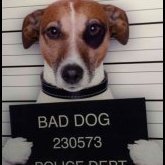



Wedge-TailedEaglePortraitRaptorDomains.thumb.jpg.41a306d3445a68f0f2df773e01776ea6.jpg)




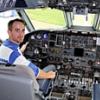
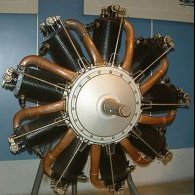
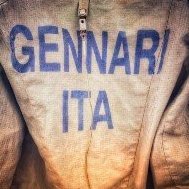
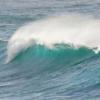

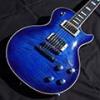
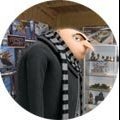
.thumb.jpg.0bac681e0da8e4ed7557610e98fda908.jpg)
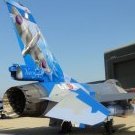
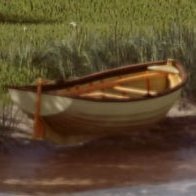
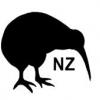
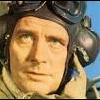
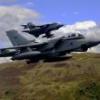



.thumb.jpg.cfc129272ffec824439b15e6013d5952.jpg)

